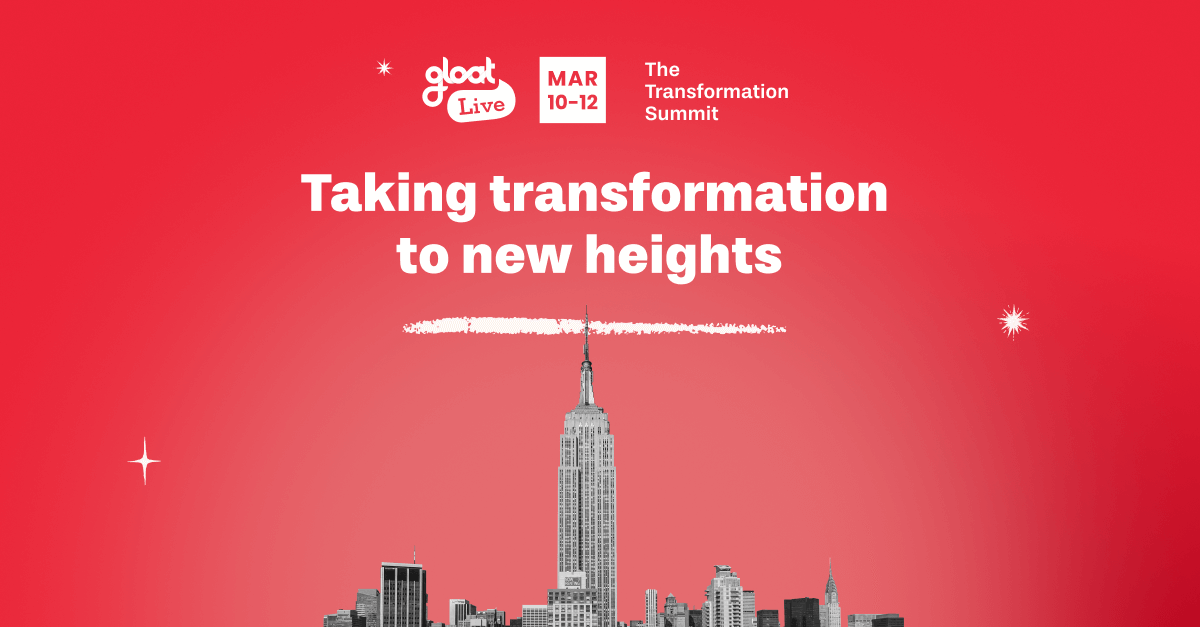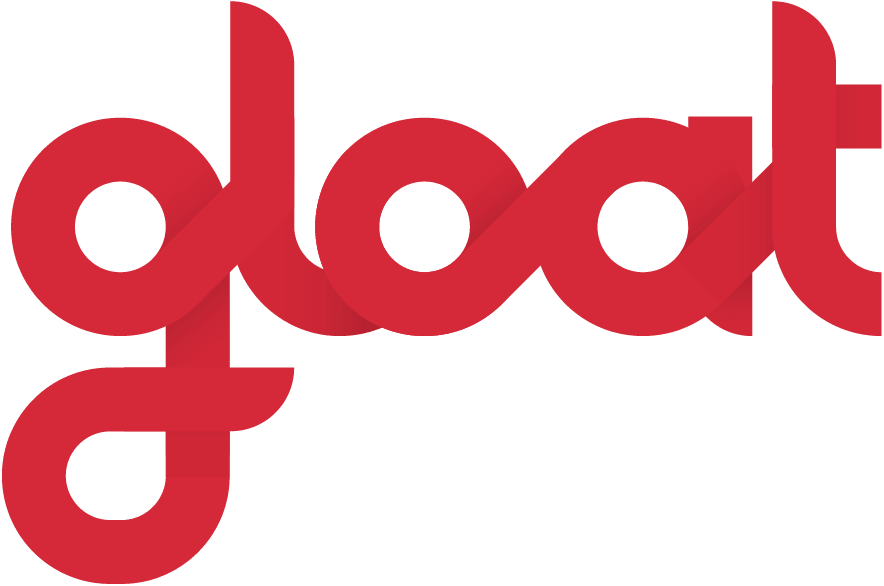Gloat Live 2025 rewind: the most important takeaways from our summit
Change is on the horizon. Nearly 1 in 2 CEOs acknowledge the imperative to revamp their business models to ensure long-term viability. Rapid advancements in AI in combination with ongoing market uncertainty and geopolitical volatility are turning reinvention efforts into a non-negotiable mission. But while many organizations are vying to architect new ways of working,

Change is on the horizon. Nearly 1 in 2 CEOs acknowledge the imperative to revamp their business models to ensure long-term viability. Rapid advancements in AI in combination with ongoing market uncertainty and geopolitical volatility are turning reinvention efforts into a non-negotiable mission.
But while many organizations are vying to architect new ways of working, not all change initiatives are created equally. According to Jason Averbook, a Senior Partner at Mercer, “All transformations are made up of three things: mindset, skillset, and toolset.”
We dedicated our flagship summit Gloat Live to developing the blueprint for creating the culture, capabilities, and digital infrastructure needed to pivot ahead of the curve. And now we’re sharing the top takeaways so that you can kick your own transformation initiative into overdrive.
5 key Gloat Live takeaways to help you level up your transformation strategy
Over the course of 2.5 days, over 25 different speakers took to the Gloat Live stage to share their best practices for architecting successful change initiatives. Here are some of the most important takeaways:
#1. AI is about to shake up IC roles. Learn how to prepare accordingly
We all know AI will forever change work as we know it. But exactly what kinds of shifts can leaders expect and which roles will be most impacted?
To answer those questions, we gathered a group of experts from KPMG, Deloitte, and Microsoft for a panel on agentic AI. During their chat, Deloitte’s Human Capital Eminence Leader Sue Cantrell shared the following words of wisdom about the future of individual contributor roles. “Everybody’s gonna be managing AI agents. It’s almost like everybody gets an assistant. Everybody becomes a manager,” she explained.
She went on to foreshadow what this might mean for more junior-level employees, noting, “Entry-level talent traditionally has learned through some of the entry-level tasks. A lot of that is gonna be taken on by AI. And how do we upskill those entry-level talent when they’re not doing that kind of more routine work that allows them to learn?’”
#2. Don’t overlook the people component of human-machine collaborations
While everyone is speculating about the next wave of AI innovations and what they’ll mean for our working world, we can’t lose sight of the most important element of any organization: people. Josh Bersin explained why this employee-centric vantage point is so crucial during his keynote.
“The most successful companies in every industry…are always driven by people, not machines,” he said. “You can automate away all sorts of costs but all you’ve done is equal everybody else in your market. It’s your new ideas, your new innovations, your new customer relationships, your customer intimacy, understanding who you are as a business that makes companies successful.”
#3. Skills intelligence is a crucial component of successful AI adoption
Skills have been a hot topic for a few years now—and the conversation will only continue to heat up as AI gains traction. EPAM’s Chief Learning Scientist Sandra Loughlin is a big believer that skills are a non-negotiable part of every AI discussion because having the requisite expertise will determine just how much use your company can get out of AI in the first place.
“AI is driving the need for skills intelligence and decision-making,” she explains. “Skills are the other side of being able to actually leverage AI in the organization effectively and then realign the people to do the work alongside AI.”
Watson Stewart, Global Head of Talent & Skills at Standard Chartered, echoed the importance of taking a skills-centric approach, noting, “We talk about this idea of what are the skills to win? That we need more people in more places investing their time to drive business performance.”
#4. Make the shift from reactive to proactive
Gone are the days when leaders can sit back and see how other executives are tackling major challenges so they can follow suit. Instead, every executive must devise strategies that keep their businesses a step ahead of today’s ever-accelerating pace of change.
Seagate’s Chief People and Places Officer Patricia Frost was quick to emphasize the importance of a proactive approach. “We’re not a catch and receive kind of business. We’re a proactive, go out and solve it before it’s a crisis organization,” she explained.
Kathryn van der Merwe shared a similar sentiment when describing the leadership approach she takes at Telstra. “Workforce and capabilities is the biggest area of focus for us over the next five years and that’s looking at how we stay proactive,” she said. “We need to be able to build autonomous networks that need new types of skills. We’ve gotta help certain pockets adjust, but we’ve also gotta lift skills right across the board,” the People, Culture, and Communications Group Executive concluded.
#5. Create a business case your leadership can’t ignore
All too often, leaders struggle to gain the cross-functional support needed to launch the kind of game-changing technology needed to take their transformation to the next level. While gaining approval is challenging, it’s possible—especially if you follow Olivier Vankerk’s advice.
As the former SVP of Human Capital Analytics & Technology at UnitedHealth Group, it’s safe to say he knows more than a thing or two about building a solid business case. When it comes to gaining buy-in for an AI-powered talent marketplace, Vankerk emphasizes the importance of focusing on pain points that will resonate with your entire leadership team, including finance.
In his words, “Finance people care about the cost of operations. And so a problem we were solving is the amount of recruiting spend that was occurring in the organization, not just because of how dysfunctional our laying off and rehiring processes were, but because filling jobs externally takes much longer. It requires more resources. We spend too much money on learning and learning systems and had thousands of learning professionals. So there was a big opportunity, in response to financial pressures, to optimize and reduce the spend there.”
Want more expert-backed transformation insights? Check out Gloat Live On-Demand to explore the ins and outs of successful change initiatives with all of our visionary speakers.




